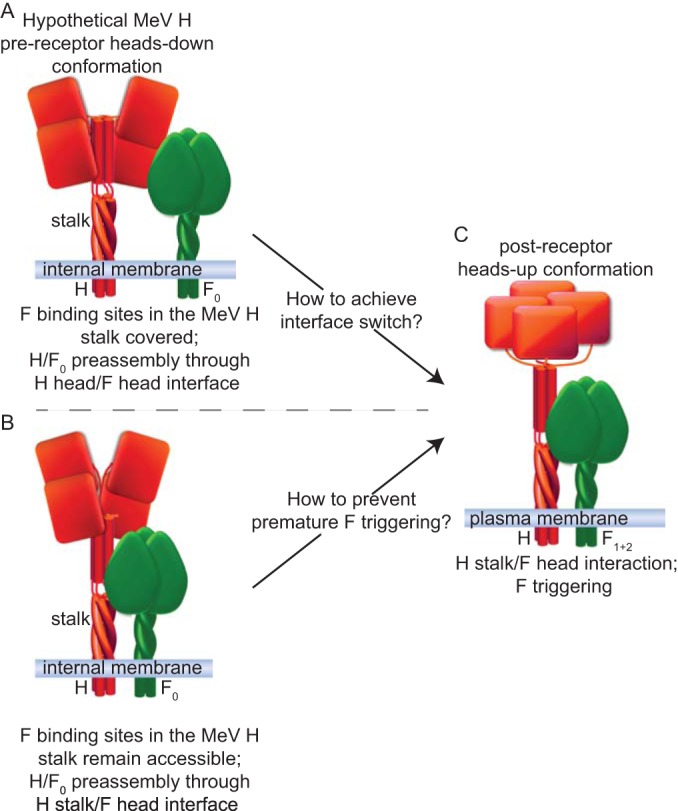FIG 1.

MeV glycoprotein oligomerization models. Prior to receptor binding, the attachment protein (H) is shown in red in a hypothetical heads-down conformation. (A and C) As proposed in Jardetzky and Lamb (29), the head domains may physically impede interaction of the F0 trimer with the H stalk, and intracellular H/F0 complex preassembly is mediated through an alternative interface between the F and H head domains (A). Receptor binding induces an H heads-up conformation, allowing productive interaction of H with the F protein, resulting in F triggering (C). (B) Alternatively, F0 may directly interact with the H stalk domain even if the H heads are in heads-down mode. While the model shown in panel A necessitates a protein-protein interface switch, the model shown in panel B raises the question of how premature F triggering is prevented. Note that evidence for different head arrangements was reported for MeV H (5); but the depicted heads-up and heads-down conformations are hypothetical, and cartoons are based on structural data obtained for NDV and PIV5 HN proteins and the subsequently proposed universal Paramyxovirinae fusion models (29).
